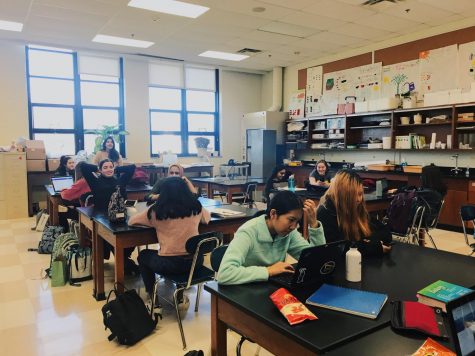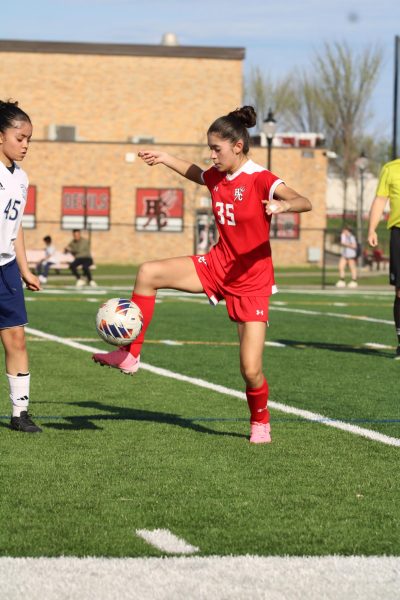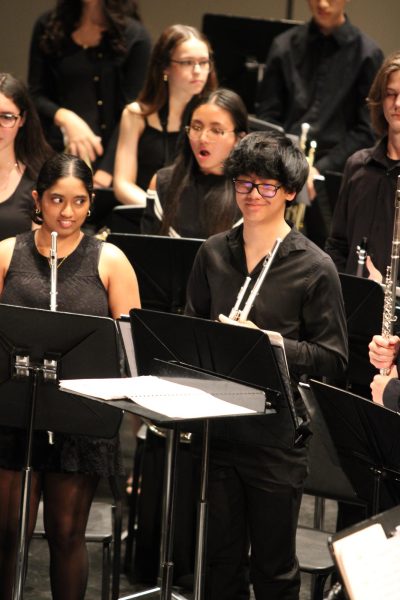Why small classes matter
Certain classes have more than 25 students, which can impair the student’s quality of education.
With the tragic results of the $166 million referendum vote, the board has begun considering drastic cuts that could be made to Hinsdale Central and Hinsdale South in order to fund necessary building repairs. One option presented at Monday’s board meeting was cutting teachers and increasing class sizes to a ratio of 28:1.
While I understand the necessity of cutting the budget, I think increasing class sizes will be extremely harmful to students.
With a student to teacher ratio of about 10.2:1, Central currently has relatively small class sizes in comparison to other neighboring schools, such as LT which has a ratio of 16:1, but I believe this is one of the reasons why Central students are able to excel the way they do. Increasing this ratio would be doing a disservice to the education of the thousands of students who attend the school.

Science classes are known for being on the smaller side due to lab safety.
The National Education Association did a study many years ago testing the effects that class sizes had on students’ education and determined that classes with relatively fewer students (20-25) were months ahead than classes with more students. Students in the smaller classes were also able to demonstrate much more eagerness to participate and engage in the classroom.
Speaking from personal experience, as a senior, I have been in all sorts of classes that ranged from 30 students, such as my AP US History class, to merely 12 students, such as Philosophy, and I can honestly say that the smaller classes were the most impactful for me as a student. My smaller classes always encouraged more class discussion, allowed student independence, and students in these classes were more willing to participate.
Another positive effect I noticed first hand was the relationships made with both the students in the class and the teacher. In larger classes, it’s hard to create a strong relationship with the teacher because they have many other students to consider and teach. In my smaller classes, however, I would feel no pressure coming in for help whenever needed and asking for help in class as well. With a small student to teacher ratio, teachers have the advantage of focusing on each individual student and their needs.
In regards to student relations, smaller classes facilitate conversation and collaboration that ultimately result in strong student relationships. Often times when I am in a large class I won’t know most students’ name until the end of the year, which goes to show the lack of communication that results from large classes.
I understand that the board has to make some tough decisions about what to cut and at what cost, but I hope it is understandable that the cost to the value of education from increasing class sizes is too high for this decision to be considered.

Hajera Naveed is a Senior Writer and Section Editor for Devils' Advocate. Her hobbies include writing, volunteering, painting, and running. When she isn't...













